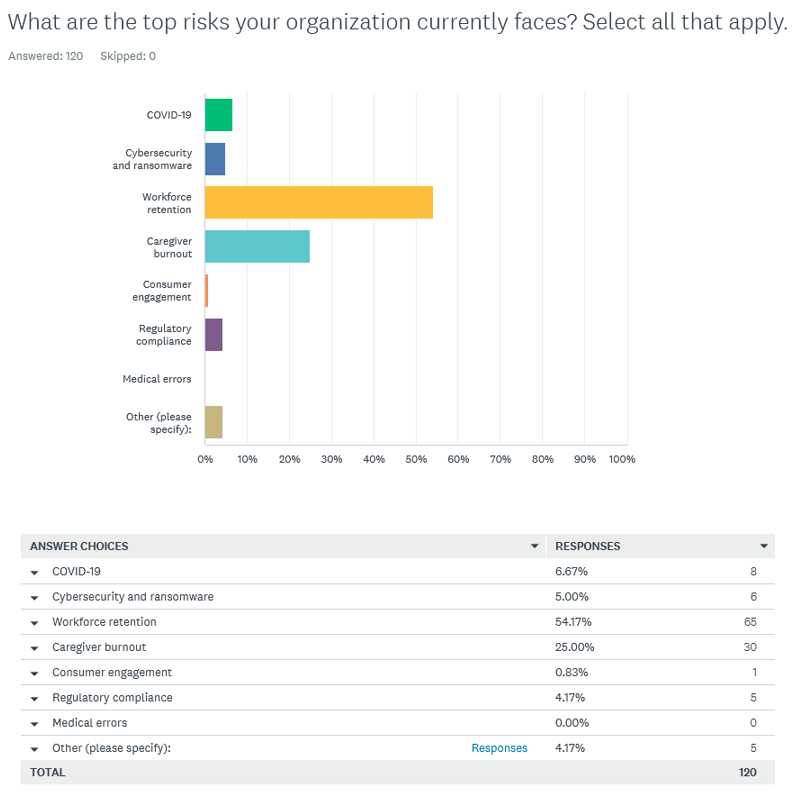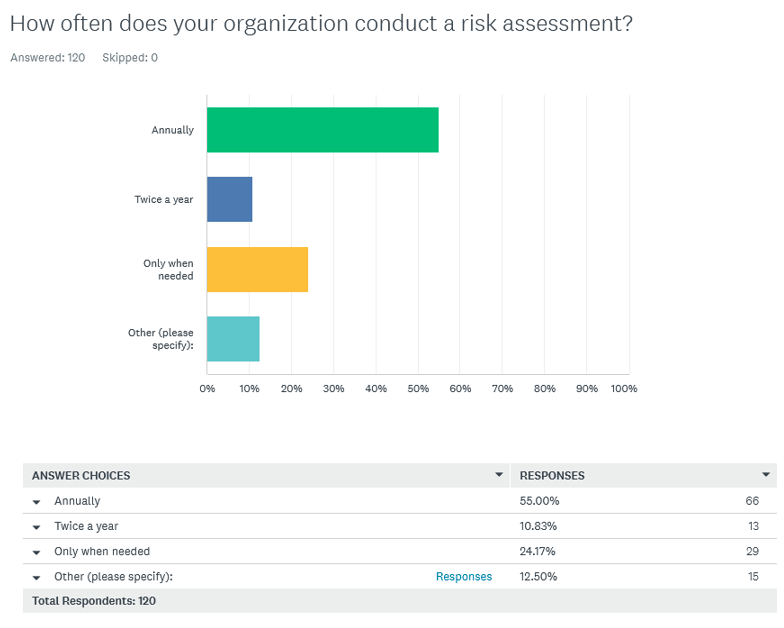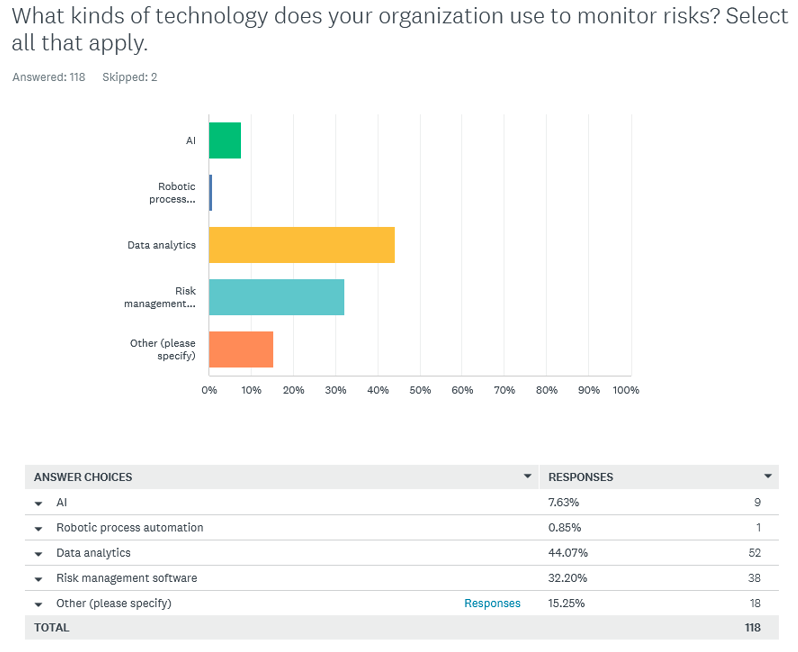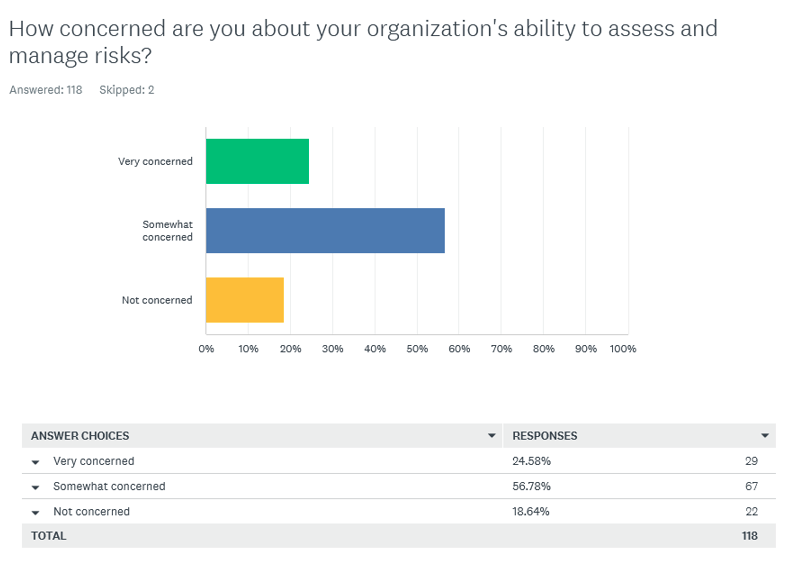PSQH Quick Poll 2022: Taking the Pulse of Healthcare Risk Management
By Jay Kumar
As part of Healthcare Risk Management Week, PSQH reached out to our readers with a few questions about how healthcare organizations are dealing with managing risks.
The Quick Poll had a total of 120 respondents.
Biggest risks facing healthcare organizations
Asked which are the top risks facing their organizations, 54% of respondents said their biggest concern was workforce retention. Other top concerns were caregiver burnout (25%), COVID-19 (6.7%), cybersecurity and ransomware (5%), and regulatory compliance (4.2%).

Frequency of risk assessments
Asked how often their organization conducts a risk assessment, 55% of respondents said annually. Another 24.2% said they conducted assessments only when needed, and 10.9% said they conduct risk assessments twice a year. Others wrote in monthly, depends on service line, and when an outbreak of any disease is detected.

Risk management technology
When asked what types of technology they use to monitor risks, 44% of respondents said they use data analytics. Another 32.2% use risk management software, and 7.6% said they use AI. Others wrote in that they use Excel spreadsheets, and pen and paper.

Concern over organizational risk management
When asked about the level of concern regarding their organization’s ability to assess and manage risks, 56.8% of respondents said they were somewhat concerned. Another 24.6% indicated they were very concerned, while 18.6% were not concerned.

Who responded
The job titles of the survey respondents were varied: nurses (28.3%), risk managers (12.5%), VP/director/officer of Quality (10%), C-suite level (CEO, COO, hospital administrator, etc., 9.2%), and VP/director/officer of Patient Safety (5%). Write-in titles include board member, practice manager, occupational health coordinator, and manager, internal audit. Seventy percent of respondents indicated they work in a hospital, followed by ambulatory/physician organization (9.2%), ancillary health facility (3.3%), and post acute/home health (2.5%). Other write-ins included: state department of health, patient safety organization, consulting organization, and insurance company.
Thanks to our sponsor Origami Risk.


